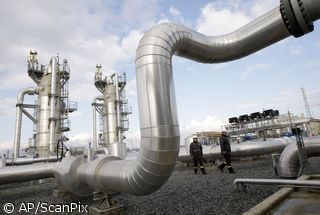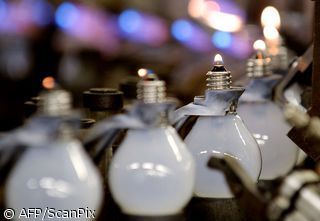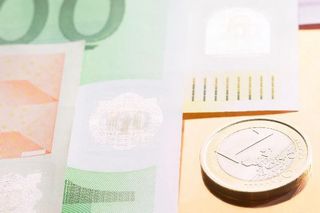The Greek drachma will be traded in for the euro
Published:
31 December 2000 y., Sunday
Europe’s oldest currency, the 2,650-year-old Greek drachma, has endured war and turmoil. Friday, it finally met its match in the euro and was traded on the international market for the last time.
GREECE OFFICIALLY joins the European Union’s single currency Monday, and financial institutions will begin trading in the euro Wednesday. Banks and the Athens Stock Exchange will remain closed Tuesday to facilitate the transition.
The Greek central bank spent money for the last time Friday to fix the drachma at its central parity rate, selling $139.5 million to keep the drachma up. The drachma — meaning “handful” in ancient Greek — was the standard silver coin of Greek antiquity. It is believed to have been first minted in about 650 B.C. in what is now western Turkey and was originally worth a handful of arrows.
Produced separately by different city-states, the drachma was widely used in the ancient world. Spread by trade and conquest — it was the coin of Alexander the Great — it has been found as far away as Afghanistan. It also served as the model for another coin, the dirham, which is still used as an expression of currency in the Islamic world today.
Šaltinis:
ASSOCIATED PRESS
Copying, publishing, announcing any information from the News.lt portal without written permission of News.lt editorial office is prohibited.
The most popular articles
 In its first meeting in 2010, the Gas Coordination Group, under the chairmanship of the Commission, has focused today on the assessment of the situation on security of gas supply in the EU-27 and countries of the Energy Community and discussed priorities for the work of the Group in 2010.
more »
In its first meeting in 2010, the Gas Coordination Group, under the chairmanship of the Commission, has focused today on the assessment of the situation on security of gas supply in the EU-27 and countries of the Energy Community and discussed priorities for the work of the Group in 2010.
more »
 Luc Van den Brande, President of the EU Committee of the Regions (CoR), has used his first meeting with the President of the European Council, Herman Van Rompuy, to underline the importance of consultation between local, regional and national authorities.
more »
Luc Van den Brande, President of the EU Committee of the Regions (CoR), has used his first meeting with the President of the European Council, Herman Van Rompuy, to underline the importance of consultation between local, regional and national authorities.
more »
 Basile Nkwesi, Directeur Commercial of Multiprint, speaks for dozens of frustrated business managers in this busy enterprise center when he talks about Cameroon’s costly and unreliable electricity.
more »
Basile Nkwesi, Directeur Commercial of Multiprint, speaks for dozens of frustrated business managers in this busy enterprise center when he talks about Cameroon’s costly and unreliable electricity.
more »
 During 2009, over 2400 new corporate clients, whose total number currently exceeds 16 thousand, began using Bank SNORAS services.
more »
During 2009, over 2400 new corporate clients, whose total number currently exceeds 16 thousand, began using Bank SNORAS services.
more »
 In 2009, the European Investment Bank (EIB) provided EUR 2.5 billion in 16 credit lines for financing the investment projects of SMEs (EUR 1 955 million) and local authorities (545 million) in Spain.
more »
In 2009, the European Investment Bank (EIB) provided EUR 2.5 billion in 16 credit lines for financing the investment projects of SMEs (EUR 1 955 million) and local authorities (545 million) in Spain.
more »
 In 2009, the number of counterfeit euro coins removed from circulation was 172 100, down from 195 900 the year before.
more »
In 2009, the number of counterfeit euro coins removed from circulation was 172 100, down from 195 900 the year before.
more »
 Haiti began participating in the International Monetary Fund’s General Data Dissemination System on December 28, 2009, marking a major step forward in the development of its statistical system.
more »
Haiti began participating in the International Monetary Fund’s General Data Dissemination System on December 28, 2009, marking a major step forward in the development of its statistical system.
more »
 According to the data of NASDAQ OMX Vilnius Stock Exchange, the price of Bank SNORAS registered ordinary shares grew by more than 2.5 times.
more »
According to the data of NASDAQ OMX Vilnius Stock Exchange, the price of Bank SNORAS registered ordinary shares grew by more than 2.5 times.
more »
 The European Commission has cleared under the EU Merger Regulation the proposed acquisition of Cadbury PLC of the UK by Kraft Foods Inc. of the US by way of public offer.
more »
The European Commission has cleared under the EU Merger Regulation the proposed acquisition of Cadbury PLC of the UK by Kraft Foods Inc. of the US by way of public offer.
more »
 Statistics Lithuania informs that construction input prices inNovember 2009, against October, dropped by 0.5 percent.
more »
Statistics Lithuania informs that construction input prices inNovember 2009, against October, dropped by 0.5 percent.
more »